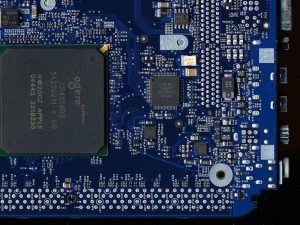External hard drives are a convenient way to store and transport large amounts of data. But like any electronic device, they can malfunction, leading to lost files. Whether you accidentally deleted important documents, formatted the drive incorrectly, or encountered physical damage, external hard drive data recovery is often possible. This guide will walk you through the steps of recovering lost data from your external hard drive, exploring both free and paid software options and offering tips to increase your chances of success.
Table of Contents
Understanding Data Loss Scenarios
There are several ways data can become inaccessible on an external hard drive:
- Accidental Deletion: Simply dragging and dropping files to the recycle bin might seem like a harmless act, but forgetting to empty the bin can lead to permanent deletion.
- Formatting: Formatting erases all data on a drive, preparing it for use. Accidental formatting can be devastating, especially if you haven’t backed up your files.
- Logical Errors: Logical errors occur within the file system, making files invisible to your computer even though they haven’t been physically erased.
- Physical Damage: Physical damage to the drive’s internal components can render it unreadable. This might be due to dropping the drive, exposing it to extreme temperatures, or water damage.
The Importance of Acting Quickly
The success rate of data recovery depends largely on how quickly you take action. Once data is overwritten by new information, it becomes permanently lost. Here’s what to do as soon as you realize you’ve lost data:
- Stop Using the Drive: The more you use the drive after data loss, the higher the chance of overwriting recoverable files. Stop using the drive immediately to minimize the risk of further data loss.
- Power Down the Computer: Turn off your computer properly to avoid any potential damage to the drive or your computer’s internal components.
Data Recovery Methods
There are two main approaches to data recovery:
- Data Recovery Software: This is the most common and accessible option for most users. Several software programs can scan your external hard drive for lost files and attempt to recover them.
- Data Recovery Services: Professional data recovery services might be necessary for physically damaged drives or complex data loss scenarios. These services can be expensive, but they offer a higher success rate for critical data.
Data Recovery Software
Several free and paid data recovery software options are available. Here’s a breakdown of the considerations:
- Free Software: Popular free options include Recuva and Disk Drill. These programs can recover recently deleted files and are a good starting point for simple data loss situations. However, their ability to recover data overwritten by new information is limited.
- Paid Software: Paid data recovery software like EaseUS Data Recovery or Stellar Data Recovery offer more advanced features, including deep scanning for lost partitions and support for various file formats. They often come with a free trial that allows you to scan your drive and preview recoverable files before purchasing.
Choosing Data Recovery Software
Here are some factors to consider when choosing data recovery software:
- Type of Data Loss: Consider the cause of your data loss. If you accidentally deleted files, basic free software might suffice. However, for formatted drives or complex scenarios, paid software with deep scanning capabilities is recommended.
- Operating System: Ensure the software is compatible with your operating system (Windows, Mac, etc.).
- Budget: Free software can be a good starting point, but paid software offers more powerful features and higher success rates.
Using Data Recovery Software
Once you’ve chosen your software, follow these general steps:
- Download and Install: Download and install the data recovery software on a different drive than the one containing the lost data. This avoids accidentally overwriting recoverable files.
- Launch the Software: Run the software and select your external hard drive.
- Choose a Scan Type: Most software offers different scan options. Start with a quick scan of recently deleted files. If unsuccessful, proceed to a deeper scan, which takes longer but might uncover more data.
- Preview Files: Many programs allow you to preview the recovered files before saving them. This helps you determine if the software is successfully recovering the data you need.
- Recover Data: Select the files you want to recover and choose a safe location on a different drive for storage.
Tips for Successful Data Recovery
- Act Quickly: The sooner you attempt recovery, the higher the chance of success.
- Stop Using the Drive: Don’t write new data to the drive after experiencing data loss.
- Choose the Right Software: Consider the cause of data loss and your budget when selecting software.
Featured Image by Jan Van Bizar from Pixabay




